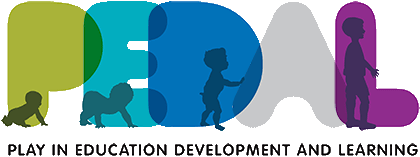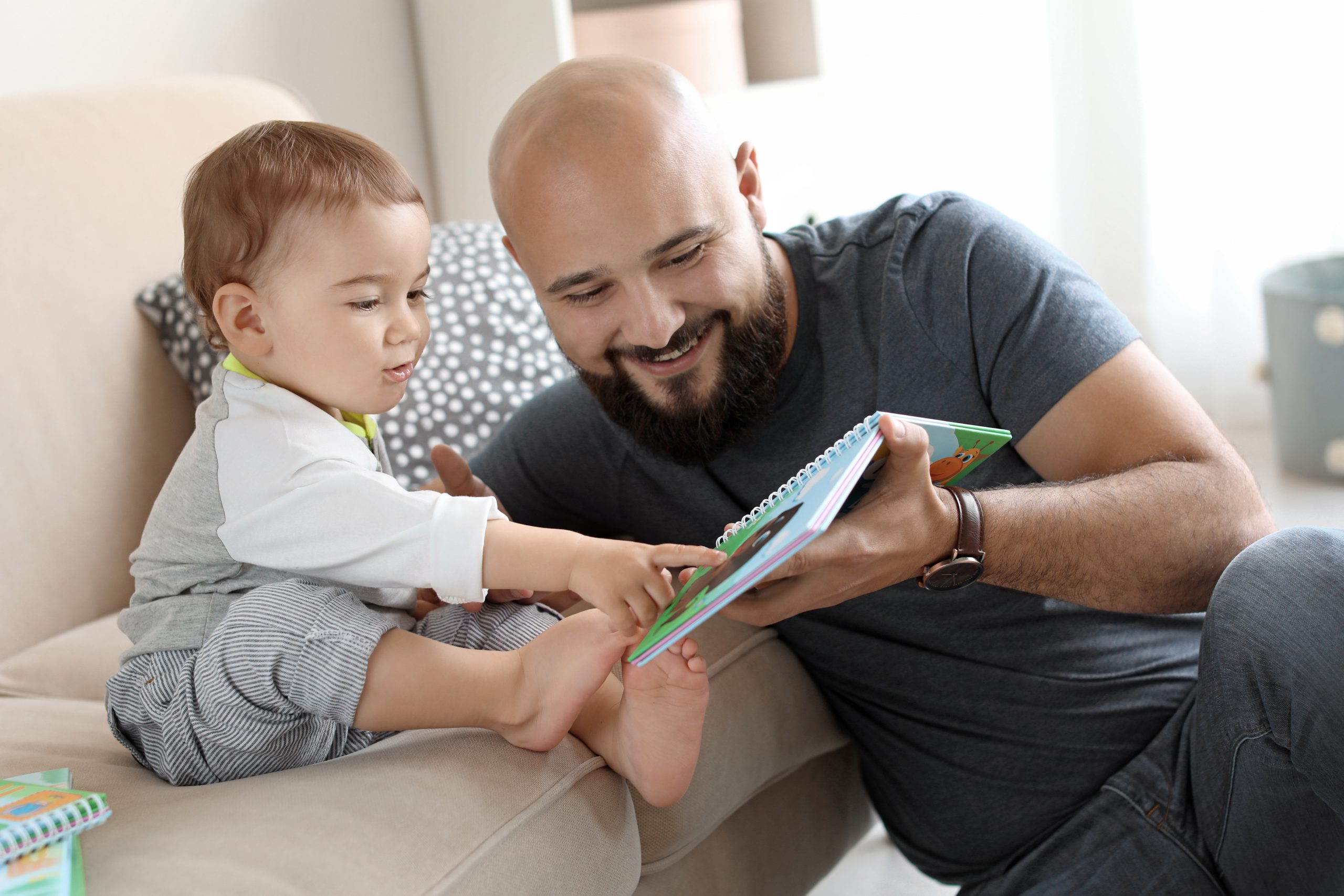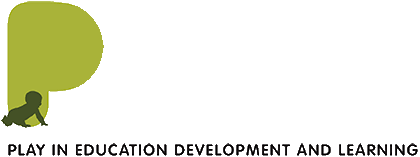Using lag schedules to increase toy play variability for children with intellectual disabilities
Relatively few studies have evaluated procedures for increasing play skills in children with intellectual disabilities. To address this limitation, this study evaluated the extent to which lag schedules increased novel toy play responses for three children who exhibited little or no appropriate toy play. Results show that the lag 1 schedule increased toy play variability […]
Relatively few studies have evaluated procedures for increasing play skills in children with intellectual disabilities. To address this limitation, this study evaluated the extent to which lag schedules increased novel toy play responses for three children who exhibited little or no appropriate toy play. Results show that the lag 1 schedule increased toy play variability for all three participants and the lag 2 schedule produced very little additional variability for the two participants exposed to this condition. The results of a social validity assessment suggest that classroom paraprofessionals (i) perceived the participants’ toy play as typical and (ii) were satisfied with the outcomes produced by the lag schedules. We discuss the clinical implications and the potential limitations of the findings. Copyright (c) 2014 John Wiley & Sons, Ltd.
Peer Play Interactions and Readiness to Learn: A Protective Influence for African American Preschool Children From Low-Income Households
Guided by a strengths-based resiliency framework, this article reviews a body of research on the positive influence of interactive peer play for African American preschool children from low-income households. This literature provides evidence for positive associations among interactive peer play experiences at home and in school, and childrens early childhood social and academic skills. It […]
Guided by a strengths-based resiliency framework, this article reviews a body of research on the positive influence of interactive peer play for African American preschool children from low-income households. This literature provides evidence for positive associations among interactive peer play experiences at home and in school, and childrens early childhood social and academic skills. It presents the development and validation of three distinct dimensions of interactive peer play with African American children attending Head Start. It reviews research examining associations between these 3 dimensions and childrens academic and social outcomes, as well as evidence-based interventions designed to foster interactive peer play for this population. It highlights challenges and directions for future research, with emphasis on the likely research needed to extend our understanding of interactive peer play experiences for Latino and Asian American children and the complex mechanisms through which positive peer interactions during early childhood may support childrens early learning and development.
Development of the Indigenous Child-Initiated Pretend Play Assessment: Selection of play materials and administration
BACKGROUND/AIM: There is a need for culturally appropriate assessments for Australian Indigenous children. This article reports the selection of culturally appropriate and gender-neutral play materials, and changes in administration identified to develop further the Indigenous Child-Initiated Pretend Play Assessment (I-ChIPPA). METHOD: Twenty-three typically developing children aged four to six years from the Pilbara region in […]
BACKGROUND/AIM: There is a need for culturally appropriate assessments for Australian Indigenous children. This article reports the selection of culturally appropriate and gender-neutral play materials, and changes in administration identified to develop further the Indigenous Child-Initiated Pretend Play Assessment (I-ChIPPA). METHOD: Twenty-three typically developing children aged four to six years from the Pilbara region in Western Australia participated in the study. Children were presented with four sets of play materials and frequency counts were recorded for each time the child used one of the play materials in a pretend play action. Twelve of the 23 children came to play in pairs. RESULTS: Both boys and girls used the Pilbara toy set including the dark coloured dolls and Pilbara region animals, more frequently than the standardised play materials from the Child-Initiated Pretend Play Assessment (ChIPPA). CONCLUSION: This study reports the first steps in the development of the I-ChIPPA. Future development will include the refinement of the administration and scoring with pairs of children, and then validity testing the assessment.
To Play or Not to Play: Diverse Motives for Latino and Euro-American Parent-Child Play in a Children’s Museum
A popular social discourse in the United States is that play is important for children’s learning and that parental involvement maximizes play’s learning potential. Past research has concluded that parents who hold this view of play are more likely to play with their children than those who do not. This study investigated the prevalence of […]
A popular social discourse in the United States is that play is important for children’s learning and that parental involvement maximizes play’s learning potential. Past research has concluded that parents who hold this view of play are more likely to play with their children than those who do not. This study investigated the prevalence of this view among Euro-American and immigrant Latino parents of young children in order to illuminate the extent to which it uniquely and uniformly motivates parent-child play. Parents’ models of play were assessed through interviews and naturalistic observations in a children’s museum. Analysis revealed ethnic group differences in parent-child play that corresponded with parental beliefs about play. Within-group analysis, however, revealed diversity in the ways that these play behaviours and beliefs came together to comprise parents’ models of play. Discussion focuses on the social nature of play, the dynamic nature of culture, and the issue of individual subject validity. Implications for the interpretation of parent–child play in early childhood settings are considered.
The relation between social engagement and pretend play in autism
The focus of this study is the nature and concomitants of pretend play among young children with autism. Age- and language-matched children with autism (n= 27), autism spectrum disorder (n= 14), and developmental disorders without autism (n= 16) were administered the Test of Pretend Play (ToPP; Lewis & Boucher, 1997), with an additional rating of […]
The focus of this study is the nature and concomitants of pretend play among young children with autism. Age- and language-matched children with autism (n= 27), autism spectrum disorder (n= 14), and developmental disorders without autism (n= 16) were administered the Test of Pretend Play (ToPP; Lewis & Boucher, 1997), with an additional rating of ‘playful pretence’. As predicted, children with autism showed less playful pretend than participants with developmental disorders who did not have autism. Across the groups, playful pretence was correlated with individual differences in communication and social interaction, even when scores on the ToPP were taken into account. Limitations in creative, playful pretend among children with autism relate to their restricted interpersonal communication and engagement.
Free play time of children with learning disabilities in a noninclusive preschool setting: An analysis of play and nonplay behaviours.
Some children with disabilities go to special preschools where adults help them play. The adults who work in preschools sometimes ask occupational therapists for advice to help children play more. Occupational therapists need to know how children play when not helped by adults. This study videoed children playing both with lots of toys and without […]
Some children with disabilities go to special preschools where adults help them play. The adults who work in preschools sometimes ask occupational therapists for advice to help children play more. Occupational therapists need to know how children play when not helped by adults. This study videoed children playing both with lots of toys and without toys to see how they chose to play. Within the Republic of Ireland, young children with learning disabilities may attend special preschools where they do not share any part of their day with typically developing children. Within these settings, preschool staff support children’s play. Clinicians such as occupational therapists may be called upon to assist in progressing their play. To provide appropriate recommendations, occupational therapists must have a clear understanding of what play a child with learning disabilities engages in when not supported by adults. Occupational therapy literature described play as the most common occupation of children with a focus on process‐driven activity. This may be at odds with a model of early intervention, where play is often product‐driven, with the end goal in mind. The aim of this research was to establish what free play, if any, children with learning disabilities engage in when not supported by adults in an Irish preschool setting. Secondly, this study sought to describe what behaviours these children engage in when they were not playing. Finally, this study sought to establish inter‐rater reliability of the Revised Know Preschool Play Scale with this small sample. Systematic observation was used to explore the play and nonplay behaviours of the children involved. A convenience sample was used to identify five children to participate in the study. Results indicated that children engaged in free play within the sensory motor stage of development, as assessed using the Revised Knox Preschool Play Scale. They also spent significant time in nonplay behaviours. The behaviour patterns of the children and time spent in different activities were explored. (PsycINFO Database Record (c) 2013 APA, all rights reserved). (journal abstract)
Play and Self-Regulation: Lessons from Vygotsky
The authors consider the analysis of the literature on play research by Lillard and others in the January 2013 “Psychological Bulletin,” an analysis that questioned the prevailing assumption of a causal relationship between play and child development, especially in the areas of creativity, reasoning, executive function, and regulation of emotions. The authors regard these connections […]
The authors consider the analysis of the literature on play research by Lillard and others in the January 2013 “Psychological Bulletin,” an analysis that questioned the prevailing assumption of a causal relationship between play and child development, especially in the areas of creativity, reasoning, executive function, and regulation of emotions. The authors regard these connections as critical for teachers in early-childhood classrooms and for other advocates of child play. They claim that the conclusions of Lillard and her coauthors place these professionals in a difficult position because they already face sharp pressure to replace play with academic activities. The authors suggest that the difficulty researchers have in linking play to development partly results from a failure to account for both cognitive and noncognitive developments across a complex trajectory. To help see the problem more clearly, they argue for a return to the Vygotskian and post-Vygotskian theories that differentiate between immature and mature play. The authors then describe their creation, an observational tool based on such theories, that helps researchers and practitioners judge the quality of pretend play.
African American Fathers’ Contributions to Children’s Early Academic Achievement: Evidence from Two-Parent Families from the Early Childhood Longitudinal Study-Birth Cohort
Research Findings: This study utilized a large sample (“N” = 750) of 2-parent families from the Early Childhood Longitudinal Study-Birth Cohort to examine the contributions of African American fathers’ home literacy involvement, play activities, and caregiving at 24 months to children’s reading and math achievement in preschool. After family characteristics and child characteristics were controlled for, both […]
Research Findings: This study utilized a large sample (“N” = 750) of 2-parent families from the Early Childhood Longitudinal Study-Birth Cohort to examine the contributions of African American fathers’ home literacy involvement, play activities, and caregiving at 24 months to children’s reading and math achievement in preschool. After family characteristics and child characteristics were controlled for, both mother and father characteristics predicted child achievement. Mother age predicted math achievement but not reading. Furthermore, even after mother predictors were entered into the hierarchical regressions, fathers’ education and home literacy involvement also significantly predicted achievement. African American fathers who engaged in more frequent shared book reading, telling stories, singing songs, and provided more children’s books in their homes at 24 months had children with better reading and math scores in preschool. Practice or Policy: These findings support growing evidence that fathers contribute to child development. Implications for research on early academic achievement in ethnically diverse samples are discussed.
Tensions in Policy and Practice: Influences on Play in Abu Dhabi’s New School Model KG Framework
This article reports on three salient socio-cultural and systemic factors that are influential in play in Abu Dhabi Education Council’s (ADEC’s) kindergarten (KG) framework from the teacher perspective. Anecdotal evidence suggests that during ADEC’s progressive educational reform, emphasis has reverted to academic performance outcomes rather than whole child learning through play. Tensions may then occur […]
This article reports on three salient socio-cultural and systemic factors that are influential in play in Abu Dhabi Education Council’s (ADEC’s) kindergarten (KG) framework from the teacher perspective. Anecdotal evidence suggests that during ADEC’s progressive educational reform, emphasis has reverted to academic performance outcomes rather than whole child learning through play. Tensions may then occur surrounding the nature and extent of play practices for early learning. Following semi-structured interviews with 60 KG teachers, three salient factors emerged. These are illustrated in this article and discussed in light of the international literature on play. Tensions in policy and practice highlighted in this article are: a focus on academic performance outcomes; children’s readiness to engage in play and parent perspectives on play. The article then discusses what these tensions may mean for the future of play in ADEC KGs situated within a period of educational reform.
Playfulness, Ideas, and Creativity: A Survey
This article investigates whether self-reports about playfulness are related to self-reports about creativity and the alternate uses of objects. An on-line survey was conducted of how people think about themselves. One thousand, five hundred and thirty-six people completed the survey. They were asked whether a variety of statements were very characteristic of themselves through to […]
This article investigates whether self-reports about playfulness are related to self-reports about creativity and the alternate uses of objects. An on-line survey was conducted of how people think about themselves. One thousand, five hundred and thirty-six people completed the survey. They were asked whether a variety of statements were very characteristic of themselves through to whether they were very uncharacteristic. Respondents were then asked to offer alternative uses for 2 different objects. Those people who characterized themselves as being playful clearly thought of themselves as being creative. The self-reports of their playfulness, creativity, and innovation were positively correlated with each other and were validated with their suggested uses for 2 different objects. Personality measures were derived from the respondents’ self-assessments. On the openness scale, the measure was positively correlated with the respondents’ assessments of their own playfulness and with the number of alternative uses for two objects.


